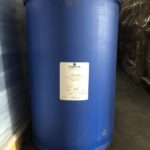Sorbitol

Glycerin
January 30, 2018Competitive advantages
- Direct purchase from the manufacturer
- Fast delivery of the product
- Providing the best brands in the world
Sorbitol; application, properties and features
Sorbitol is a chemical with unique and unique properties. This chemical consists of atoms of carbon, hydrogen and oxygen. Sorbitol can be called an alcohol, because there are six hydroxy groups in its structure. Hydroxy or OH groups cause the sorbitol molecule to behave like an alcohol as well as a multifactorial sugar. In other words, the number of hydroxides in the chemical structure of sorbitol has given it special properties.
A name is derived from sorbitol in almost every industry that is associated with food and food, pharmaceutical and cosmetic ingredients. Sorbitol is one of the most popular natural chemicals among the variety of raw materials for the production of quality products in the food and feed industry.
Our brands
- Roquette - France
- Maize - India
Physical, chemical and other properties of sorbitol:
Sorbitol is an alcoholic beverage naturally found in some foods and fruits.
As mentioned in the previous section, there are 6 hydroxyl groups in the chemical structure of sorbitol; these hydroxy groups can participate in oxidation reactions - they become aldehyde or alcoholic agents. From the oxidation of this sugar, a new molecule called fructose is produced, which is a natural sugar in most fruits. The molecular structure of sorbitol is shown in the figure.
The location of hydroxy groups in the subbitol molecule will produce different physical and chemical properties. Sorbitol is used both in laboratory scale and in industrial scale. The following table summarizes the physical and chemical properties of sorbitol.

| Physical and chemical properties | Description |
|---|---|
| physical state | Solid white powder / white granules / white / liquid percolate |
| Molecular formula | C6H14O6 |
| Molecular weight | 17/182 |
| Common names | Di-glucitol / di-sorbitol / sorbitol / sorbol / hexitol |
| Melting point (° C) | 95 |
| Boiling point (° C) | 296 |
| viscosity | 180 تا 220 |
| Storage and maintenance conditions | Room temperature / away from humidity |
| Solubility in water | Soluble in water |
| Flash point (fahrenheit) | 225 |
| Solubility in other chemicals | Relative solubility in ethanol |
| PH level | 6 to 7 in 100 grams of water at 20 ° C |
| Merck No. | 107759 |
Sorbitol applications:
Sorbitol is currently one of the most widely used raw materials in the food and pharmaceutical industries. Large industries that work in the field of cosmetic and cosmetic products are one of the world's largest consumers of sorbitol. The most important uses of sorbitol are listed in the table below.
| Industry name | Sorbitol application |
|---|---|
| Pharmacy | Additive and Stabilizer for the preparation of suspensions / emulsions / creams / production of gelatin capsules / production of various syrups and pills |
| make up products | Toothpaste / Skin and hair protective oils / Emulsion stabilizers and suspensions |
| Food industry | Sweeteners / Provides all types of gum / Gum production / Chocolate / Candy production / Dietary sweets / Suitable for glucose and sucrose sugars / Moisture preserving of muffins and breads and cakes / Candy sweeteners and towels |
| Industrial applications | Absorbent moisture content in the preparation of various paper / Application in galvanizing and black aluminum pen / Production of industrial surfactants |
Safety Tips and Warnings on Working with Sorbitol Chemical:
Sorbitol is an organic organic chemical with a vegetable base, which is organically found in many foods and fruits. The complications associated with the production of sorbitol in the industry are not significant, and are more closely related to the sudden absorption of this substance by the individual. Swallowing sorbitol does not have harmful effects on the human body, but in some substances it affects the gastrointestinal system and exacerbates it.
Sorbitols are known as food sweeteners and drug addicts; drugs that contain sorbitol should be taken according to the physician's instructions and observing the warning in the catalog. This drug is used as a source of carbohydrates in food for people with diabetes and in non-sugar products.








